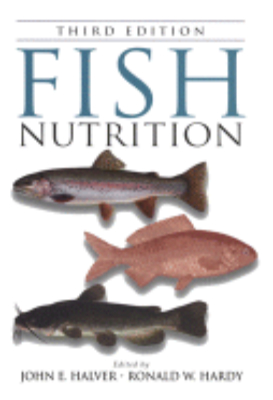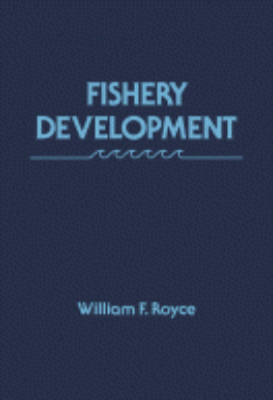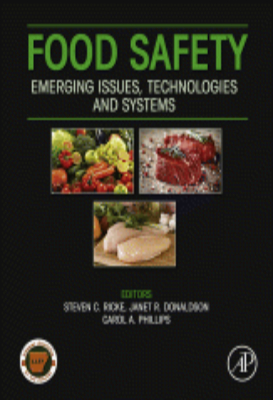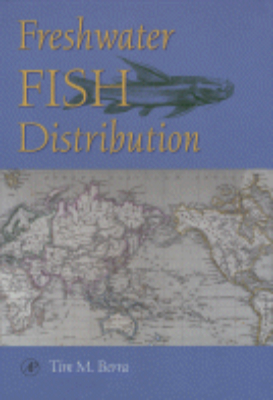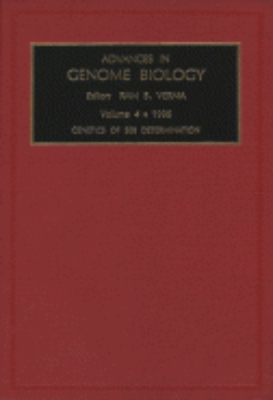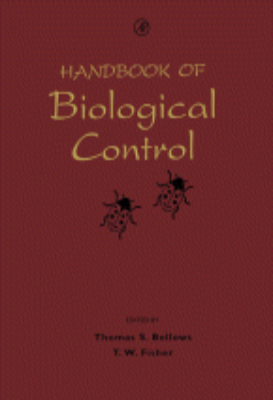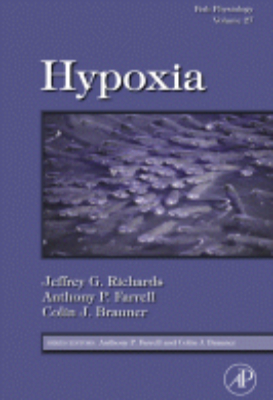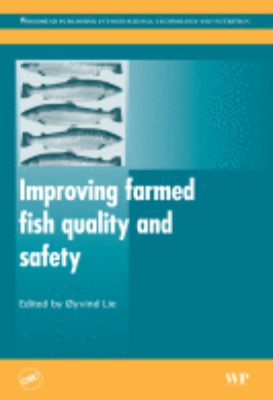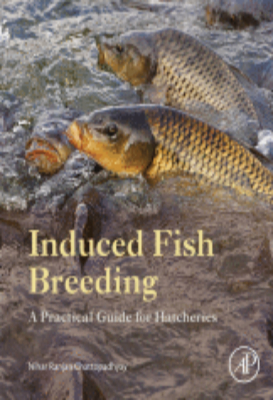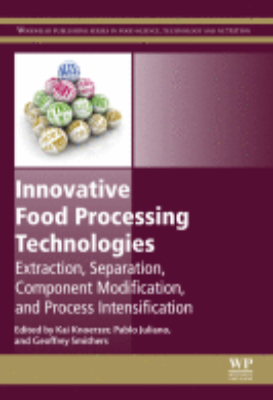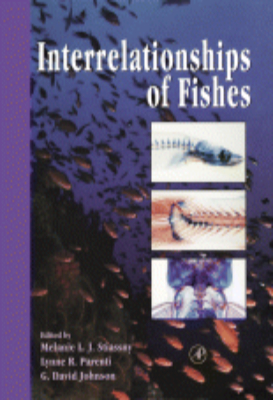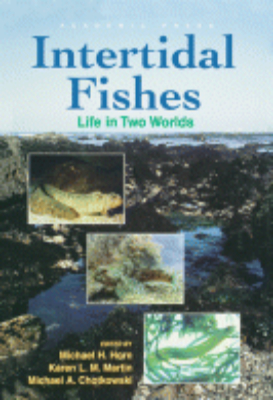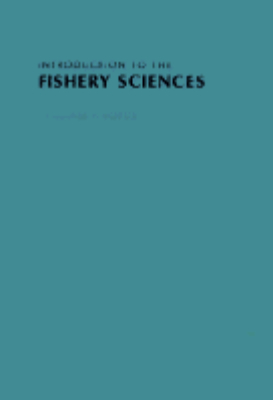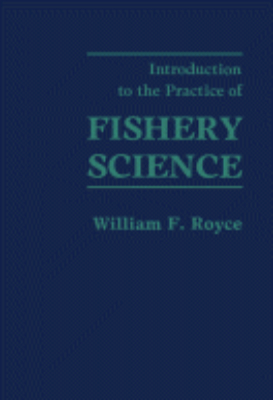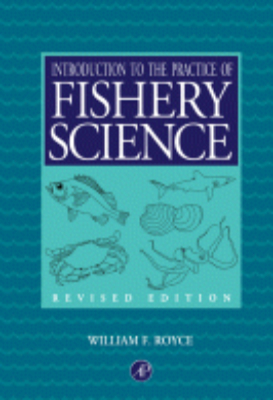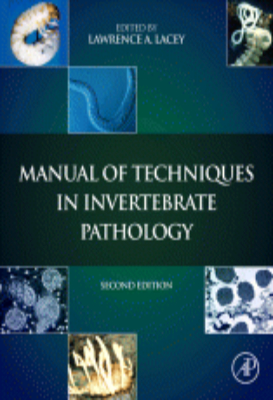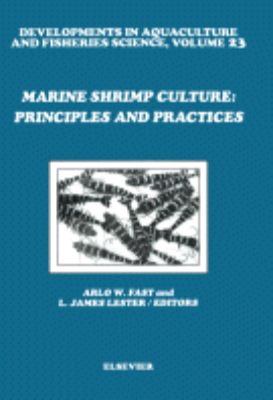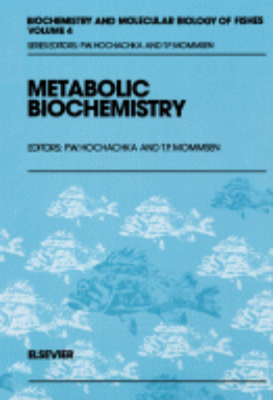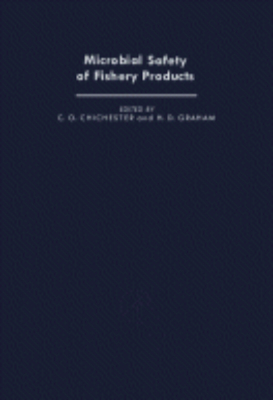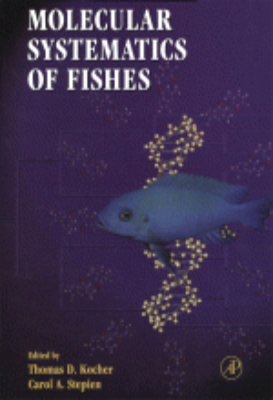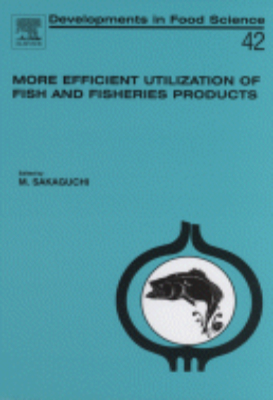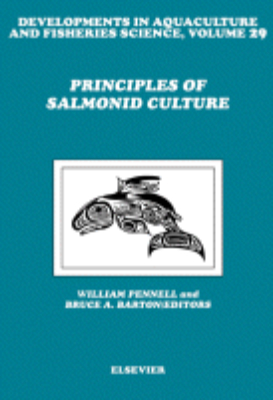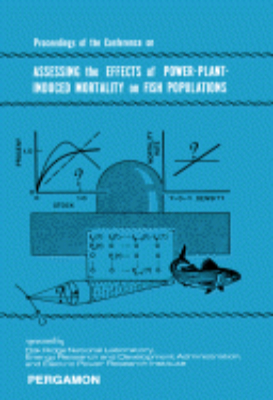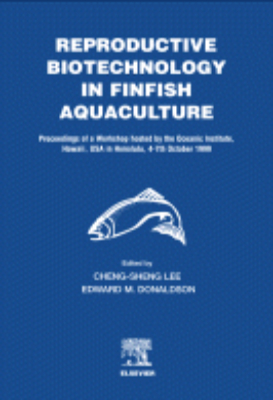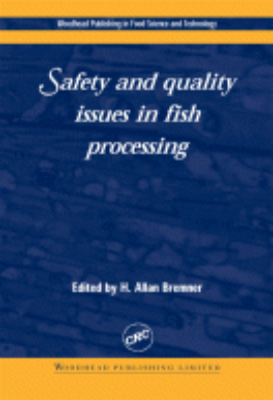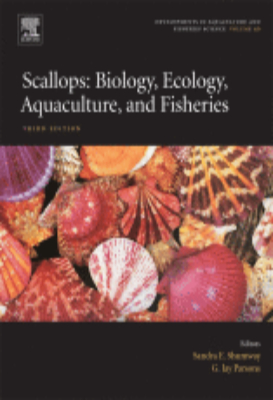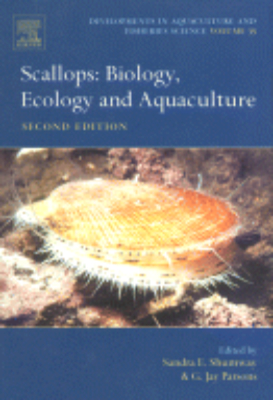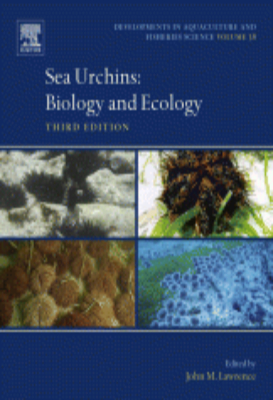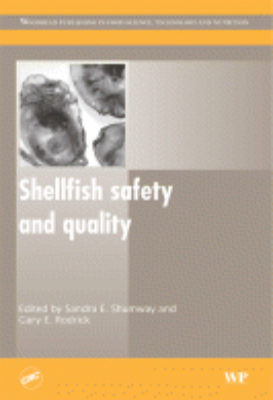E-Resources
Fish Nutrition: Third Edition 2003
This third edition of Fish Nutrition is a comprehensive treatise on nutrient requirements and metabolism in major species of fish used in aquaculture or scientific experiments. It covers nutrients required and used in cold water, warm water, fresh water, and marine species for growth and reproduction. It also highlights basic physiology and biochemistry of the nutrients and applications of these principles to scientific and practical diet formulations and to manufacturing techniques for major species used worldwide in aquaculture. Key Features *Nutrient requirements for dietary formulations for fish farming *Digestive physiology *Comparative nutritional requirements of different species *Fish as unique animals for certain metabolic pathways
Fishery Development
This book provides an overview of the whole process of fishery development and an appraisal for more efficiency in the industry. Topics include a broad overview of long-term changes in development of fisheries; the technical, social, political, organizational, and time requirements of long-term development programs; how to increase the long-term benefits to be derived from fisheries, and artisanal and market fishing, recreational fishing, and fish farming.
Food Safety
"Food Safety: Emerging Issues, Technologies and Systems offers a systems approach to learning how to understand and address some of the major complex issues that have emerged in the food industry. The book is broad in coverage and provides a foundation for a practical understanding in food safety initiatives and safety rules, how to deal with whole-chain traceability issues, handling complex computer systems and data, foodborne pathogen detection, production and processing compliance issues, safety education, and more. Recent scientific industry developments are written by experts in the field and explained in a manner to improve awareness, education and communication of these issues. Key Features. Examines effective control measures and molecular techniques for understanding specific pathogens. Presents GFSI implementation concepts and issues to aid in implementation. Demonstrates how operation processes can achieve a specific level of microbial reduction in food. Offers tools for validating microbial data collected during processing to reduce or eliminate microorganisms in foods"
Freshwater Fish Distribution
This book clearly identifies nearly 170 families of fishes through the use of high-quality illustrations and includes an accurate account of selected members of that particular fish family, as well as a distribution map and accompanying commentary on classification, distribution, and diversity. Key Features Key Features* High-quality illustrations of representatives from each family* Distribution map provided for each family* Commentary for each family
Handbook of Biological Control
For many years the use of chemical agents such as pesticides and herbicides has been effective in controlling the many varieties of pests that infest both agricultural crops and backyard gardens. However, these pests are gradually becoming resistant to these agents, because the agents themselves are acting as selective factors making the pests better and better able to resist and persist. As a result, the use of biological controlling agents is increasing. This book is a comprehensive and authoritative handbook of biological control.
Improving Farmed Fish Quality and Safety
"Global aquaculture production has grown rapidly over the last 50 years. It is generally accepted that there is limited potential to increase traditional fisheries since most fish stocks are well or fully exploited. Consequently increased aquaculture production is required in order to maintain global per capita fish consumption at the present level. Fish farming enables greater control of product quality and safety, and presents the possibility of tailoring products according to consumer demands. This important collection reviews safety and quality issues in farmed fish and presents methods to improve product characteristics. The first part of the book focuses on chemical contaminants, chemical use in aquaculture and farmed fish safety. After an opening chapter discussing the risks and benefits of consumption of farmed fish, subsequent contributions consider environmental contaminants, pesticides, drug use and antibiotic resistance in aquaculture. Part two addresses important quality issues, such as selective breeding to improve flesh quality, the effects of dietary factors including alternative lipids and proteins sources on eating quality, microbial safety of farmed products, parasites, flesh colouration and off-flavours. Welfare issues and the ethical quality of farmed products are also covered. The final part discusses ways of managing of product quality, with chapters on HACCP, monitoring and surveillance, authenticity and product labelling. With its distinguished editor and international team of contributors, Improving farmed fish quality and safety is a standard reference for aquaculture industry professionals and academics in the field. Key Features. Reviews safety and quality issues in farmed fish and presents methods to improve product characteristics. Discusses contaminants, persistent organic pollutants and veterinary drug residues and methods for their reduction and control. Addresses important quality issues, genetic control of flesh characteristics and the effects of feed on product nutritional and sensory quality"
Induced Fish Breeding
"Induced Fish Breeding: A Practical Guide for Hatcheries takes a successive approach to explaining the use of breeding technology with proven scientific methods. It provides real-life examples for the purpose of maximizing fish and seed production to support overall sustainability in aquaculture. It is a concise reference to understanding the latest developments in the field, useful for anyone who is involved in fisheries or hatchery management as well as researchers and students who need to understand the technology. A practice originally developed to produce quality seed in captivity, induced breeding has made great strides in fish populations for India. The book offers a practical and succinct overviewfrom existing methods and operations to recent trends and their impacts on aquaculture for the future. Key Features. Provides detailed information about empirical breeding practices like mixed spawning and indiscriminate hybridization. Presents the environmental and hormonal influence on maturation and spawning of fish with real-life fish breeding examples from around the world. Includes step-by-step scientific measures to help solve problems arising from common fish-farming mistakes. Provides real-life examples for the purpose of maximizing fish and seed production to support overall sustainability in aquaculture"
Innovative Food Processing Technologies
"Innovative Food Processing Technologies: Extraction, Separation, Component Modification and Process Intensification focuses on advances in new and novel non-thermal processing technologies which allow food producers to modify and process food with minimal damage to the foodstuffs. The book is highly focused on the application of new and novel technologies, beginning with an introductory chapter, and then detailing technologies which can be used to extract food components. Further sections on the use of technologies to modify the structure of food and the separation of food components are also included, with a final section focusing on process intensification and enhancement. Key Features. Provides information on a variety of food processing technologies. Focuses on advances in new and novel non-thermal processing technologies which allow food producers to modify and process food with minimal damage to the foodstuffs. Presents a strong focus on the application of technologies in a variety of situations. Created by editors who have a background in both the industry and academia"
Interrelationships of Fishes
"Comprising by far the largest and most diverse group of vertebrates, fishes occupy a broad swathe of habitats ranging from the deepest ocean abyss to the highest mountain lakes. Such incredible ecological diversity and the resultant variety in lifestyle, anatomy, physiology and behavior, make unraveling the evolutionary history of fishes a daunting task. The successor of a classic volume by the same title, Interrelationships of Fishes, provides the latest in the ""state of the art"" of systematics and classification for many of the major groups of fishes. In providing a sound phylogenetic framework from leading authorities in the field, this book is an indispensable reference for a broad range of biologists, especially students of fish behavior, anatomy, physiology, molecular biology, genetics and ecology--in fact, anyone who wishes to interpret their work on fishes in an evolutionary context. Key Features. Provides thorough and comprehensive treatment of the Phylogency of fishes. Assembles an International team of expert contributors. Useful to a wide variety of fish biologists"
Intertidal Fishes
"Intertidal Fishes describes the fishes inhabiting the narrow strip of habitat between the high and low tide marks along the rocky coastlines of the world. It analyzes the specialized traits of these fishes that have adapted to living in the dynamic and challenging space where they are alternately exposed to the air and submerged in water with the ebb and flow of the tides. This book provides a comprehensive account of fishes largely overlooked in many previous studies of intertidal organisms and emphasizes how they differ from fishes living in other deeper-water habitats. Coverage includes air breathing, movements and homing, sensory systems, spawning and parental care, feeding habits, community structure, systematic relationships, distribution patterns, and the fossil record in the intertidal zone. Key Features. Written by an international team of 21 experts on intertidal fish biology. Worldwide coverage of intertidal fishes. Comprehensive phylogenetic listing of all fish families with intertidal members. Global biogeographic analysis involving over 700 species from 86 sites. Outlines field and laboratory methods pertinent to studying intertidal fishes. Thorough ecological coverage with chapters on vertical distribution, movements and homing, reproduction, feeding, and community structure. Covers the physiology of aerial and aquatic respiration, osmoregulation, and sensory systems"
Introduction to the Fishery Sciences
Introduction to the Fishery Sciences provides a broad introduction into the study of aquatic organisms and ecology of fisheries and some of the legal, social, and political aspects of their use. The book is intended to be used by students and those who want to broaden their knowledge on the science of fishery. The text provides discussions on a wide range of topics such as trends in foodfish production; managing of fishery aquatic environment; identification and classification of fishery resources; and fishery resource management. Limnologists, freshwater biologists, ecologists, fisheries managers, and students in fisheries science will find the book a good reference material.
Introduction to the Practice of Fishery Science: 1984
Introduction to the Practice of Fishery Science covers the role of fishery science in various social affairs. This book is divided into three parts encompassing 15 chapters. Part I is about the profession, what is embodied in a professional career and the expanding challenges to the profession, with a summary of the work of organizations that employ fishery scientists. Part II deals with the traditional sciences that apply to the aquatic environment and its organisms. This part also tackles their biology, ecology, populations, and culture. Part III presents an overall qualitative concept of the activity of fishery scientists. This part also provides a perspective on fishery problems in several major areas and the ways in which the many kinds of scientists are attacking them. This book will prove useful to fishery scientists, researchers, and students.
Introduction to the Practice of Fishery Science: 1996
Revised and updated, Royce'sIntroduction to the Practice of Fishery Scienceis a classic text. With a new chapter onaquaculture, this book provides the background for a first course in fishery science. Intentionally focused on the practical and professional requirements of careers in the management and maintenance of fisheries, this text will be useful to students as well as to established professionals.
Manual of Techniques in Invertebrate Pathology
"Manual of Techniques in Invertebrate Pathology, Second Edition, describes a wide range of techniques used in the identification, isolation, propagation/cultivation, bioassay, quantification, preservation, and storage of the major groups of entomopathogens, including entomophthorales, entomopathogenic fungi, entomopathogenic bacteria of the Bacilli, Nematode parasites, and pathogens and parasites of terrestrial molluscs. The book presents the perspectives of an international group of experts in the fields of invertebrate pathology, including microbiology, mycology, virology, nematology, biological control, and integrated pest management. Organized into 15 chapters, the book covers methods for the study of virtually every major group of entomopathogen, as well as methods for discovery and diagnosis of entomopathogens and the use of complementary methods for microscopy. It discusses the use of molecular techniques for identifying and determining phylogeny, factors that contribute to resistance to entomopathogens, and several other aspects of the science of invertebrate pathology. It also explains initial handling and diagnosis of diseased invertebrates, basic techniques in insect virology, and bioassay of bacterial entomopathogens against insect larvae. In addition, the reader is introduced to the use of bacteria against soil-inhabiting insects and preservation of entomopathogenic fungal cultures. The remaining chapters focus on research methods for entomopathogenic microsporidia and other protists, how the pathogenicity and infectivity of entomopathogens to mammals are tested, and preparations of entomopathogens and diseased specimens for more detailed study using microscopy. Experienced insect pathologists, biologists, entomologists, students, biotechnology personnel, technicians, those working in the biopesticide industry, and government regulators will find this manual extremely helpful. Key Features. Step-by-step instructions for the latest techniques on how to isolate, identify, culture, bioassay and store the major groups of entomopathogens. New edition fully updated to address changes in the taxonomy of the vast majority of taxa. Discussion of safety testing of entomopathogens in mammals and also broader methods such as microscopy and molecular techniques. Provides extensive supplemental literature and recipes for media, fixatives and stains"
Marine Shrimp Culture
The commercial culture of marine shrimp in tropical areas has grown at a phenomenal rate during the last 10 to 15 years. This book provides a description of principles and practices of shrimp culture at one point in time and documents both historical events and conditions now. It also tries to look into the future. The volume provides both practical information about shrimp culture, as well as basic information on shrimp biology. It should be of value to researchers, consultant practitioners and potential investors in the marine shrimp culture industry.
Microbial Safety of Fishery Products
Microbial Safety of Fishery Products discusses the many aspects of the safety of marine products from a microbiological and toxicological standpoint. This book emphasizes the objectives and requirements for the marketing of safe and wholesome fish and fishery products; status of the sanitary quality of fishery products in the Western Hemisphere; and fishery resources of the Caribbean and their potential. The microbiological considerations in the handling and processing of molluskan shellfish; microbiology of prepared and precooked fishery products; and some toxins occurring naturally in marine organisms are also elaborated. This text likewise covers the enteric pathogens in estuary waters and shellfish; control of prepared fishery products in industry; and aflatoxins as contaminants of feeds, fish, and foods. This publication is a good reference for food scientist and nutritionists researching on the sanitary quality of fishery products.
Molecular Systematics of Fishes
"Sequenced biological macromolecules have revitalized systematic studies of evolutionary history. Molecular Systematics of Fishes is the first authoritative overview of the theory and application of these sequencing data to fishes. This volume explores the phylogeny of fishes at multiple taxonomic levels, uses methods of analysis of molecular data that apply both within and between fish populations, and employs molecule-based phylogenies to address broader questions of evolution. Targeted readers include ichthyologists, marine scientists, and all students, faculty, and researchers interested in fish evolution and ecology and vertebrate systematics. Key Features. Focuses on the phylogeny and evolutionary biology of fishes. Contains phylogenies of fishes at multiple taxonomic levels. Applies molecule-based phylogenies to broader questions of evolution. Includes methods for critique of analysis of molecular data"
Reproductive Biotechnology in Finfish Aquaculture
The successful reproduction of cultured brood stock is essential to the sustainable aquaculture of aquatic organisms. This book describes recent advances in the field of finfish reproductive biotechnology. The chapters in this volume are written by eminent scientists who review the progress and assess the status of biotechnology research that is applicable to the reproduction of finfish species for aquaculture. A wide range of topics is included starting with broodstock technologies such as broodstock genetics, broodstock nutrition, environmental control of maturation and impacts of stress on broodstock, gametes and progeny. The volume includes technologies for induction of ovulation and spermiation using synthetic hypothalamic peptides. Gamete technologies which are described include cryopreservation, chromosome set manipulation, disease prevention and control for gametes and embryos and the development of transgenic fish with enhanced production characteristics. Genetic and endocrine technologies for the production of monosex male and female fish stocks are also described. The closing chapter summarizes the discussion of each topic at the workshop, provides recommendations to industry and describes priorities of research and development. Researchers as well as teaching faculty in the aquaculture field will find this volume of great value.
Safety and Quality Issues in Fish Processing
"The processing and supply of fish products is a huge global business. Like other sectors of the food industry it depends on providing products which are both safe and which meet consumers' increasingly demanding requirements for quality. With its distinguished editor and international team of contributors, Safety and quality issues in fish processing addresses these two central questions. Part one looks at ways of ensuring safe products. There are 3 chapters on the key issue of applying HACCP systems in an increasingly international supply chain. These are complemented by chapters on identifying and controlling key hazards from pathogens and allergens to heavy metals, parasites and toxins. Part two contains a range of contributions analysing various aspects of fish quality. Two introductory chapters consider how concepts such as quality, freshness and shelf-life may be defined. This chapter provides a context for chapters on modelling and predicting shelf-life, key enzymatic influences on postmortem fish colour, flavour and texture, and the impact of lipid oxidation on shelf-life. Part three of the book looks at ways of improving quality through the supply chain. An initial chapter sets the scene by looking at ways of creating an integrated quality chain. There are then a series of chapters on key processing and preservation technologies ranging from traditional fish drying to high pressure processing. These are followed by a discussion of methods of storage, particularly in maintaining the quality of frozen fish. Two final chapters complete the book by looking at fish byproducts and the issue of species identification in processed seafood. As authoritative as it is comprehensive, Safety and quality issues in fish processing is a standard work on defining, measuring and improving the safety and quality of fish products. Key Features. Addresses how to provide fish products which are safe and also meet consumers increasingly demanding requirements for quality. Examines ways of ensuring safe products, from the application of HACCP systems in an international supply chain to the identification and control of hazards from pathogens, allergens, heavy metals, parasites and toxins. Outlines how to identify and control hazards, from pathogens and allergens to heavy metals, parasites and toxins"
Shellfish Safety and Quality
"Shellfish are a very popular and nutritious food source worldwide and their consumption has risen dramatically. Because of their unique nature as compared to beef and poultry, shellfish have their own distinct aspects of harvest, processing and handling. Edited by leading authorities in the field, this collection of review papers discusses issues of current interest and outlines steps that can be taken by the shellfish industry to improve shellfish safety and eating quality. Opening chapters provide an overview of the key issues associated with microbial and biotoxin contamination. Parts two and three then address in more detail methods to improve molluscan shellfish and crustacean quality and safety. Chapters focus on detection of algal toxins, monitoring and mitigation of the effects of harmful algal blooms, metals and organic contaminants, biofouling, disease control and selective breeding. Part four reviews legislation, regulation, public confidence in shellfish and risk management. Chapters on post-harvest issues, such as depuration, storage and packaging complete the volume. With its distinguished editors and international team of experts, Shellfish safety and quality is an essential reference for those in the shellfish industry, managers, policymakers and academics in the field. Key Features. Reviews the latest research on significant hazards such as microbial and biotoxin contamination. Discusses effective management of shellfish safety and quality, including emerging methods. Examines improved packaging methods"

